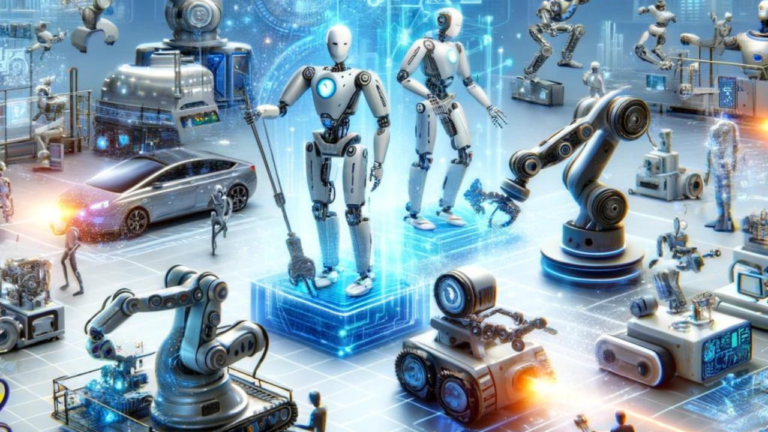Artificial Intelligence (AI) in robotics is one of the most groundbreaking technological advancements, revolutionizing how robots perform tasks. What was once a futuristic concept from space operas, the idea of “artificial intelligence robots” is now a reality, shaping industries globally. Unlike early robots, today’s AI-powered robots can retrieve data, learn from experiences, reason, and make decisions. These capabilities significantly enhance their effectiveness and versatility in sectors like manufacturing, healthcare, transportation, and domestic services.

AI in robotics is driving innovation, optimizing processes, and paving the way for future advancements. This article explores the potential of AI in robotics, its current applications, and how it is reshaping industries for a more efficient and automated future.
Table of Content
- What is Robotics?
- Role of Robotics in Artificial Intelligence
- How AI is used in Robotics?
- How do Robots and Artificial Intelligence work together?
- Benefits of AI in Robotics
- 1. Enhanced Capabilities
- 2. Increased Efficiency and Productivity
- 3. Improved Safety
- Applications of AI in Robotics
- Real-Life Applications of AI-Powered Robots
What is Robotics?
Robotics is a field that deals with the creation and designing of these mechanical humans. And robotics these days is not only restricted to the mechanical and electronics domain. Nowadays, the artificial intelligence robot is becoming ‘smarter’ and more efficient with the help of computer science.
Role of Robotics in Artificial Intelligence
Artificial Intelligence has played a very major role not only in increasing the comforts of humans but also by increasing industrial productivity, which includes quantitative as well as qualitative production and cost-efficiency. An artificial intelligence robot can significantly enhance these benefits by integrating advanced algorithms and machine learning capabilities.
Robotics and artificial intelligence (AI) are closely related fields, and when combined, they give rise to a discipline known as robotic artificial intelligence or simply “robotics in artificial intelligence.”
- Robotics in AI involves integrating AI technologies into robotic systems to enhance their capabilities and enable them to perform more complex tasks.
- AI in robotics allows robots to learn from experience, adapt to new situations, and make decisions based on data from sensors. This can involve machine learning, computer vision, natural language processing, and other AI techniques.
- Robots can use machine learning algorithms to analyze data, recognize patterns, and improve their performance over time. This is particularly useful for tasks where the environment is dynamic or unpredictable.
- AI-powered vision systems enable robots to interpret and understand visual information from the surroundings. This is crucial for tasks like object recognition, navigation, and manipulation.
The combination of robotics and AI opens up a wide range of applications, including autonomous vehicles, drones, industrial automation, healthcare robots, and more. The synergy between these fields continues to advance, leading to increasingly sophisticated and capable robotic systems.
How AI is used in Robotics?
AI plays a crucial role in modern robotics, bringing intelligence and adaptability to these fascinating machines. An Artificial Intelligence Robot is a perfect example of how AI enhances the capabilities of robots, enabling them to perform a wide range of tasks with increased autonomy and adaptability. There are several ways in which an Artificial Intelligence Robot utilizes AI in robotics:
Computer Vision
- Object Recognition: AI-powered computer vision allows robots to recognize and identify objects in their environment. Computer vision helps robots understand their surroundings, create maps, and navigate through complex environments. This is essential for autonomous vehicles, drones, and robots operating in unstructured spaces.
- Visual serving: AI allows robots to track and precisely manipulate objects based on visual feedback, crucial for tasks like welding, painting, or assembling delicate components.
AI algorithms process camera and sensor data to map surroundings, identify obstacles, and plan safe and efficient paths for robots to navigate.
Natural Language Processing (NLP)
- Human-robot interaction: Robots can understand and respond to natural language commands, enabling more intuitive and collaborative interactions with humans.
- Voice control: Robots can be controlled through voice commands, making them accessible for a wider range of users.
- Sentiment analysis: AI can analyze human text and speech to understand emotions and adjust robot behavior accordingly.



 Share your Details for subscribe
Share your Details for subscribe